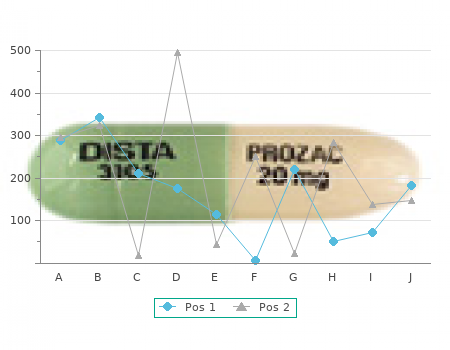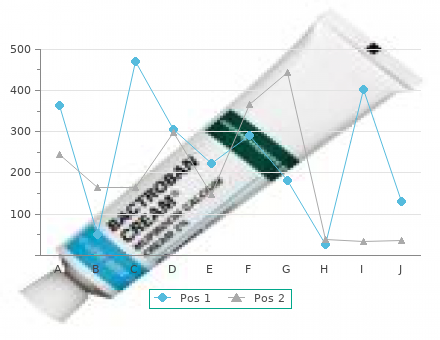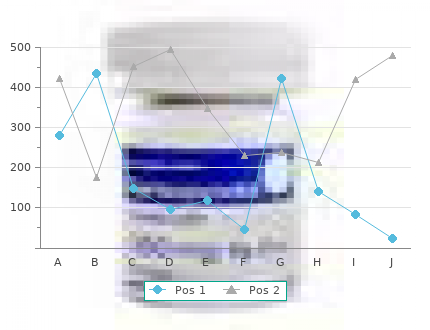Levitra Professional
By T. Domenik. University of North Carolina at Charlotte.
Citation Rules with Examples for Parts of Books on the Internet Components/elements are listed in the order they should appear in a reference generic levitra professional 20 mg mastercard. An R afer the component name means that it is required in the citation; an O afer the name means it is optional. Risunok 6, Parartema 4, • Romanize or translate titles in character-based languages (Chinese, Japanese). Ichiran-hiyo 3, or [Table 3, ] • Ignore diacritics, accents, and special characters in names. Tis rule ignores some conventions used in non-English languages to simplify rules for English-language publications. Books and Other Individual Titles on the Internet 1445 Box 72 continued from previous page. In this case, give whatever name is used for the part and follow it with a comma and the title. Parts of a book on the Internet with equal text in two or more languages Title for a Part of a Book on the Internet (required) General Rules for Title • Enter the title of the part as it appears in the book Books and Other Individual Titles on the Internet 1447 • Capitalize only the frst word of a title, proper nouns, proper adjectives, acronyms, and initialisms • Use a colon followed by a space to separate a title from a subtitle unless some other form of punctuation (such as a question mark, period, or an exclamation point) is already present • Follow non-English titles with a translation whenever possible; place the translation in square brackets • End title information with a semicolon and a space Specific Rules for Title • Titles for parts not in English • Titles for parts in more than one language • Titles for parts containing a Greek letter, chemical formula, or other special character • No title appears Box 76. Tis rule ignores some conventions used in non-English languages to simplify rules for English-language publications. Books and Other Individual Titles on the Internet 1449 Box 77 continued from previous page. Veterinary public health and control of zoonoses in developing countries = Sante publique veterinaire et controle des zoonoses dans les pays en developpement = Salud publica veterinaria y control de zoonosis en Paises en Desarrollo [Internet]. Titles for parts containing a Greek letter, chemical formula, or other special character. Figure 3, Infuence of seed extract of Syzygium Cumini (Jamun) on mice exposed to diferent doses of γ-radiation; may become Figure 3, Infuence of seed extract of Syzygium Cumini (Jamun) on mice exposed to diferent doses of gamma-radiation; • If a title contains superscripts or subscripts that cannot be reproduced with the type fonts available, place the superscript or subscript in parentheses Box 78 continues on next page... Occasionally a part does not have a formal title, only a legend (explanatory text) for the table, fgure, appendix, or other part. Parts of a book on the Internet with equal text in two or more languages Books and Other Individual Titles on the Internet 1451 Date of Update/Revision for a Part of a Book on the Internet (required) General Rules for Date of Update/Revision • Parts of books may be updated or revised between editions or versions • Begin update/revision information with a lef square bracket • Use whatever word for update or revision is provided, such as updated and modifed • Always give the year of update/revision • Convert roman numerals to arabic numbers. Look for the date accompanied by such words as updated, modifed, revised, reviewed: • At the top, bottom, or sidebar of the frst screen for the part or the bottom of the last screen of the part • In the source code for the part if it is displayed by the Web browser Box 81. Parts of a book on the Internet with date of update/revision Date of Citation for a Part of a Book on the Internet (required) General Rules for Date of Citation • Always include the date the part of a book was seen on the Internet • Include the year month and day in that order, such as 2006 May 5 • Use English names for months and abbreviate them using the frst three letters, such as Jan Books and Other Individual Titles on the Internet 1453 • If a date of update/revision is given, place the date of citation afer it and follow both dates with a right square bracket • If no date of update/revision is given, place citation date information in square brackets • End date information with a semicolon placed outside the closing bracket Specific Rules for Date of Citation • Both a date of update/revision and a date of citation Box 84. Various words are used to show that the content of a part of a book has been changed. Squeezed: why rising exposure to health care costs threatens the health and fnancial well-being of American families [Internet]. When this occurs, give the total number of pages of the part you are citing, placed in square brackets, such as [5 p. Appendix 3C, Description of model output tables and graphs; [cited 2006 Dec 15]; [7 p. If a video clip, videocast , or podcast is part of a book: • Place the word Video, Videocast, or Podcast in square brackets followed by a comma and a space • Enter the title of the part, followed by a semicolon and a space • Give the date of update/revision (if known) and the date of citation in square brackets, separated by a semicolon and a space • End date information with a semicolon and a space • Give extent as the number of minutes needed to view/listen, placed in square brackets • Abbreviate minutes to min. Standard citation to a part of a book on the Internet with traditional page numbers for location 2. Hypertextbook of regional anaesthesia for obstetrics: an international perspective [Internet]. Parts of a book on the Internet with equal text in two or more languages Books and Other Individual Titles on the Internet 1459 Language for a Part of a Book on the Internet (required) General Rules for Language • Give the language of publication if not English • Capitalize the language name • Follow the language name with a period Specific Rules for Language • Parts appearing in more than one language Box 92. Veterinary public health and control of zoonoses in developing countries = Sante publique veterinaire et controle des zoonoses dans les pays en developpement = Salud publica veterinaria y control de zoonosis en Paises en Desarrollo [Internet]. Parts of a book on the Internet with equal text in two or more languages Examples of Citations to Parts of Books on the Internet 1. Chapter 3, Guide to the contents of a protocol and review; [cited 2006 Nov 17]; p. Cochrane handbook for systematic reviews of interventions [monograph on the Internet]. Chapter 3, Guide to the contents of a protocol and review; [cited 2006 Nov 17]; p. Communicators guide for federal, state, regional, and local communicators [Internet]. Developing a national registry of pharmacologic and biologic clinical trials: workshop report [Internet]. Communicators guide for federal, state, regional, and local communicators [Internet]. Chapter 5, Te healing power of chemistry; [cited 2006 Nov 17]; [about 10 screens].

Abnormal clinical pathol- ogy findings included lipemic serum and hypercholesteremia discount 20mg levitra professional overnight delivery. Lactose and diographs indicated a diffuse soft tissue mass in the caudal abdo- excessive amounts of green vegetables should be men. Diets should be moderately low in fiber and displacing the abdominal organs cranially (arrow). Note that the cloaca is being compressed and the colon is oriented in a cranial, provide easily digested carbohydrate (eg, canary rather than its normal right lateral position (open arrow). The bird seeds, millet, panicum, corn or hulled oats) and a responded to a diet change (formulated diet, fruits and vegetables moderate amount of highly digestible protein. The addition of A decrease in photoperiod may induce polyphagia digestive enzymes to the diet may be useful (see and weight gain in pre-migratory birds. In some cases, feeding a small quantity creased food intake and weight gains appear to be of grit may improve digestion and aid absorption, but mediated by thyroid hormones, prolactin and go- should be supplied only in low quantities to prevent nadotrophins. Cold food, a cold envi- lems are more likely to occur if young birds are ronment or infrequent feeding of large amounts of suddenly introduced to new food items (unhulled food may increase the risk of crop impaction in juve- seeds, particularly). Repeated crop impactions ber of food items at an early age are less likely to may result in an atonic, pendulous crop. Ostriches may eat tion of ventricular musculature has been associated constantly following relocation, leading to foreign with vitamin E and selenium deficiencies and calci- body ingestion and impaction (see Chapter 48). The etiology is Feigned polyphagia, in which a bird hulls seeds and undetermined (see Color 19). Vitamin E and se- foods, particularly highly processed human foods (eg, lenium deficiencies have been suggested as possible cakes, desserts, crackers). When changed to a formulated diet, older, obese budgerigars and cockatiels may lose weight, yet eat Nutritional cases of malabsorption or maldigestion constantly. Obese birds should lose weight slowly to (passing undigested food) include vitamin E and se- prevent hepatopathies associated with overwhelm- lenium deficiencies (sometimes associated with ing fat metabolism. The weight loss can be tempered giardia infection), excess oil in the diet or dehydra- by adding some millet to the diet. A lack of grit has been frequently discussed as a tions and lactulose can be used to suppress progres- cause of maldigestion; however, companion birds on sive hepatopathies in some cases (see Chapter 8). Stud- ies in poultry indicate that the addition of grit in- Polydipsia/Polyuria creases the digestibility of feed by as much as ten percent,14 but similar studies have not been per- Nutritional causes of polydipsia and polyuria include formed in companion birds. Given that obesity is hypovitaminosis A, calcium deficiency, excess pro- more of a problem than maldigestion in companion tein, hypervitaminosis D , excessive dietary salt, dry3 birds, increasing the digestibility of a formulated diet seed diet, formulated diets or a high percentage of that exceeds suggested nutritional requirements is dietary fiber. Charcoal that is used in some grit mixtures may interfere with the absorption of Polyuria alone may occur in birds fed moist foods vitamins A, B2 and K and contribute to deficiencies of such as fruit, vegetables and semi-liquid diets. If offered free choice, some birds may over-con- berries and other fruits can also alter the urine color sume grit, leading to crop, proventricular or ven- (see Color 8). This problem is reported com- monly in North America but appears to be Digestive Disorders uncommon in Australia. The cause for a regional variation in the occurrence of this condition is un- White plaques in the mouth or swelling in the sali- known. Birds showing compulsive grit consumption vary ducts may be associated with hypovitaminosis should be evaluated for hepatopathy, pancreatitis, A (see Colors 8 and 13). Oral paralysis in cockatiels may be related to vita- There is a difference between grit and crushed shell. Crushed shell is almost entirely composed of limestone (calcium car- bonate) and is readily digested by acids in the pro- ventriculus. Crushed shell will provide a source of calcium, and is not effective in aiding in the mechani- cal breakdown of dietary plant material. Heavy met- al toxicity has been associated with feeding crushed shell derived from contaminated sources (oysters raised in polluted waters). The bird was maintained indoors and povitaminosis A leads to squamous metaplasia of had no exposure to sunlight or water for bathing. Horny beak material that is dry and flaky, as well as black discoloration of the epithelial surfaces causing obstruction of respiratory feathers are typical of malnutrition. Dyspnea may be change in diet and daily exposure to direct (unfiltered through caused by calcium or vitamin D deficiency if severe3 glass) sunlight. This can occur if a ciency causes the formation of ragged feathers, while tube is accidentally placed in the trachea when at- a deficiency in growing cockatiels has been associ- tempting crop feeding or if a bird (particularly a weak 46 ated with a lack of contour feathers. The association between diet and feather pigment Plumage Abnormalities has long been recognized by canary breeders. Caro- tene and xanthophyll pigments, which originate from Dark, horizontal lines (stress marks) on feathers plant material, are found in fat globules in the feath- have been associated with nutritional deficiencies ers and give rise to yellow, orange and red colors (see (particularly methionine) and indicate that a release Chapter 24).

Severe sepsis is de¿ned as sepsis plus sepsis-induced organ dysfunction or tissue hypoperfusion [2 discount levitra professional 20 mg free shipping, 3]. The term source control was ¿rst used in the early twentieth century but regained attention over the past 10 years when a panel of ex- perts was asked to provide guidelines for treating severe sepsis and septic shock during the Surviving Sepsis Campaign project. A bundle is a simple principle of care resulting from evidence-based practice guidelines that, when implemented as a group, have a signi¿cant effect on outcomes beyond implementing the individual elements alone. Each hospital can elaborate a sepsis protocol, but it must meet the standards created by the bundle [6]. However, sepsis often requires time to manifest and may rapidly develop with fatal consequences. Any infection starts with the invasion of host tissues by microorganism, which creates human immune system res- ponse, which activates an inÀammatory process to challenge the invasion. Understanding this pathophysiological cascade permits clarifying the principles of source-control: drainage, debridement and de¿nitive measures to control the effects of injury and restore the previ- ous correct function [4]. To achieve this identi¿ca- tion, the clinician should always consider clinical and laboratory signs of sepsis. Further- more, an early identi¿cation (according to the guidelines in the ¿rst 6 h) improves out- comes, reducing both mortality rates and costs [4, 5, 9, 10]. Once an infection site has been identi¿ed, the clinician should consider which procedure is more effective and safest for the patient: supported source-control measures are draining an abscess or local focus of in- fection, debriding infected necrotic tissue, removing a potentially infected device or de¿ni- tively controlling a source of ongoing microbial contamination (Table 19. To avoid more invasive procedures, percutaneous and endoscopic treatment is preferred to surgery when possible [13]. Such infectious foci should be controlled as soon as possible following successful initial resuscitation and antibiotic treatment [12–14]. The only exception to these criteria is peripancreatic necrosis, as a randomised, controlled trial comparing early vs. Antibiotic treatment must be started rapidly, but any kind of microbiologi- cal identi¿cation must be performed prior to beginning antibiotic treatment [11]. Promptly removing intravascular access devices that are potentially the source of severe sepsis or septic shock, after establishing another vascular access, is an important source-control measure [12]. Drainage may occur spontaneously or can be obtained with surgi- cal intervention or percutaneously. When evaluating the drainage method, the physician should choose the one that permits full drainage of the septic collection with the least 19 Source Control 229 Table 19. Percutaneous drainage Absolute indications Extended indications Non loculated Àuid collections Multi loculated and multiple abscesses No communication between abscess and viscus Abscesses with ¿stula No fungal aetiology Pancreatic Àuid collections Abscesses secondary to appendicitis or acute diverticulitis Retroperitoneal abscesses Pelvic abscesses physical trauma to the patient. Laparoscopic drainage of abdominal abscesses showed no signi¿cant advantage over open surgery or percutane- ous technique [19]. A plastic drain is normally left in to support the communication cre- ated by any of these techniques. There are four main methods of debridement: autolytic, mechanical, enzymatic and surgical. Surgical debridement remains the standard of care and consists of removal of devitalised tissue by a physician using a scalpel, scissors or other sharp instrument [4, 11]. Autolytic and enzymatic debridements are enzymatic processes that liq- uefy nonviable tissues [24]. Physicians help autolysis with moist wound dressings (mainly hydrocolloids and hydrogels), whereas a direct enzymatic action is obtained with topical ointments, such as collagenase, promoting debridement. Mechanical debridement generally occurs when patients use dressings that adhere to wounds, which are usually wet-to-dry dressings [25]. With any of these methods, debridement is of paramount importance, as it permits the development of a clear demarcation between necrotic and adjacent vital tissue. Timing for debridement differs in many conditions characterised by different risks and different evolution. In necrotising fasciitis, the spread of tissue necrosis is quick, so it needs early and aggressive debridement to attain a good outcome [14]. In other types of infections, such as retroperitoneal infections, the high risk of complications suggests de- laying the debridement to guarantee a safer procedure [15]. Cozza Relatively “old” debridement techniques that are obtaining new importance are biological methods: for example, larval therapy for super¿cial leg infections [26]. On the other hand, negative-pressure wound therapy and platelet-rich gel have shown signi¿cant bene¿cial effects on the wound-healing process [27–29]. The choice of primary or secondary restoration is based on the pathological condition and the source-control strategy chosen. Regardless, a less invasive but nonde¿nitive source-control method is preferred; de¿nitive measures should be delayed and performed electively, as the initial source of infection has not yet been removed. Examples are sepsis secondary to gangrenous cholecystitis, with primary percutaneous cholecystostomy and delayed cholecystectomy; or diverticu- litis, when the intervention can be performed while the infection is walled off by the host immune system and antibiotic treatment and an abscess has formed.

9 of 10 - Review by T. Domenik
Votes: 157 votes
Total customer reviews: 157

